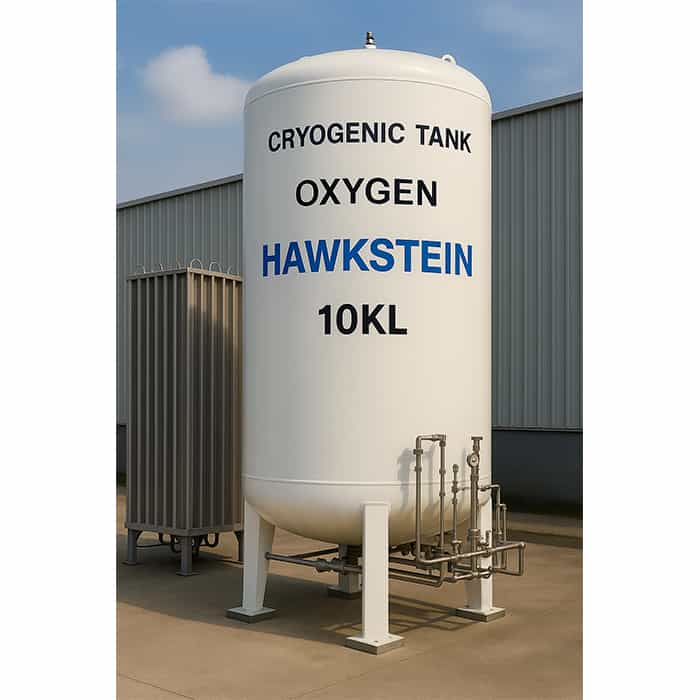
Cryogenic Tanks & Vaporizers
Cryogenic tanks are advanced storage vessels engineered to hold liquefied gases at extremely low temperatures—typically below -150°C (-240°F). These gases, such as liquid nitrogen, oxygen, argon, or LNG (liquefied natural gas), must be stored in liquid form to reduce their volume and facilitate easier transportation and handling. The tanks are designed with highly specialized features, including multi-layered insulation and vacuum-jacketed systems, to significantly reduce heat ingress. This insulation system minimizes thermal conductivity and prevents rapid temperature rise, which could otherwise lead to product loss due to boil-off or pressure build-up.
To maintain the cryogenic liquid at its required low temperature, the inner vessel is typically suspended within an outer shell, creating a vacuum space in between. This vacuum acts as a thermal barrier, effectively minimizing heat transfer through conduction and convection. Additionally, reflective insulation layers are often added to combat radiative heat transfer. Together, these technologies ensure long-term, efficient, and safe storage of cryogenic substances.
Complementing the storage function, vaporizers are essential components in cryogenic systems. Their role is to convert the stored cryogenic liquid back into its gaseous form when required for various industrial or medical applications. This phase transition is achieved by applying heat, typically sourced from ambient air, water, or steam.
The most common types include:
- Ambient air vaporizers, which use natural atmospheric heat.
- Steam vaporizers, which harness steam energy for rapid vaporization.
- Water bath vaporizers, where the cryogenic fluid passes through coils submerged in a heated water bath.
These vaporizers are designed for high thermal efficiency and safety, ensuring a steady and controlled flow of gas at the required pressure and temperature.
Together, cryogenic tanks and vaporizers form an integrated system for the efficient handling, storage, and delivery of cryogenic gases across industries such as healthcare, metallurgy, aerospace, energy, and electronics.